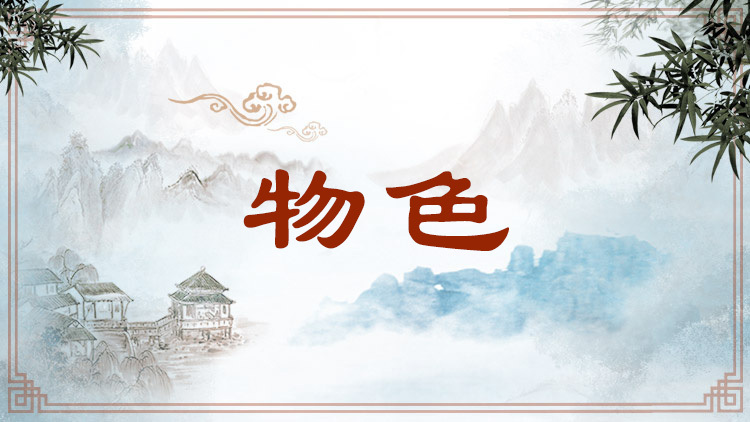Physical Features

泛指各种自然事物的形貌。“物色”本义为牲畜的毛色,引申指物体的颜色,进而指景物、景色。南朝刘勰在《文心雕龙·物色》中专门对自然景物与文学创作的关系进行了讨论。他认为“情以物迁,辞以情发”,自然景物作为审美对象能够引发人们的创作冲动,从而发为文章。优秀的文学作品,既要做到“写气图貌,既随物以宛转”,细腻描摹景物;也要“属采附声,亦与心而徘徊”,情景交融。《昭明文选》中赋类有“物色”一目,专门收录写景出众的作品。
This term refers broadly to the appearances and patterns of everything in nature. It was originally used to describe the colors of animal furs; later it became associated with the colors of all physical objects, such as the splendor of scenery and landscape. Liu Xie of the Southern Dynasties discussed at some length the relationship between natural features and literary creation in his book The Literary Mind and the Carving of Dragons. In his view, "Literary writing is created only when the writer's innermost emotion is stirred up by external things." That is, as objects of aesthetic appreciation, natural features can inspire one to turn his emotions into words. A fine piece of literary work should "reveal the vital energy and essence of external things with vivid detail." At the same time, "such work should also create sights and sounds to match the writer's emotions." It should fuse emotions and scenery into one. This type of writing can be found in the "Rhapsodic Prose" section of Selections of Refined Literature Compiled by Prince Zhaoming, which has vivid accounts of scenery and landscape.
引例 Citations:
◎春秋代序,阴阳惨舒;物色之动,心亦摇焉。(刘勰《文心雕龙·物色》)
四季不断交替,阴冷的天气使人沉郁而温暖的阳光使人感到舒畅;自然景物不断变化,也使得人的心情随之波动。
Seasons change. Cold weather makes people feel depressed, whereas warm sunshine makes them happy and relaxed. Natural scenery and objects change with time, causing change in one's mood. (Liu Xie: The Literary Mind and the Carving of Dragons)
◎物色延暮思,霜露逼朝荣。(鲍照《秋日示休上人》)
黄昏的景色使人愁思绵长,秋天的霜露让清晨的花草感到寒意逼近。
The scenery at dusk makes one feel downhearted. The frost and dew of early autumn morning chill flowers and grass, signaling the advent of winter. (Bao Zhao: An Ode to Autumn Written in Tribute to My Revered Buddhist Friend Huixiu)
推荐:教育部 国家语委
供稿:北京外国语大学 外语教学与研究出版社
责任编辑:钱耐安





